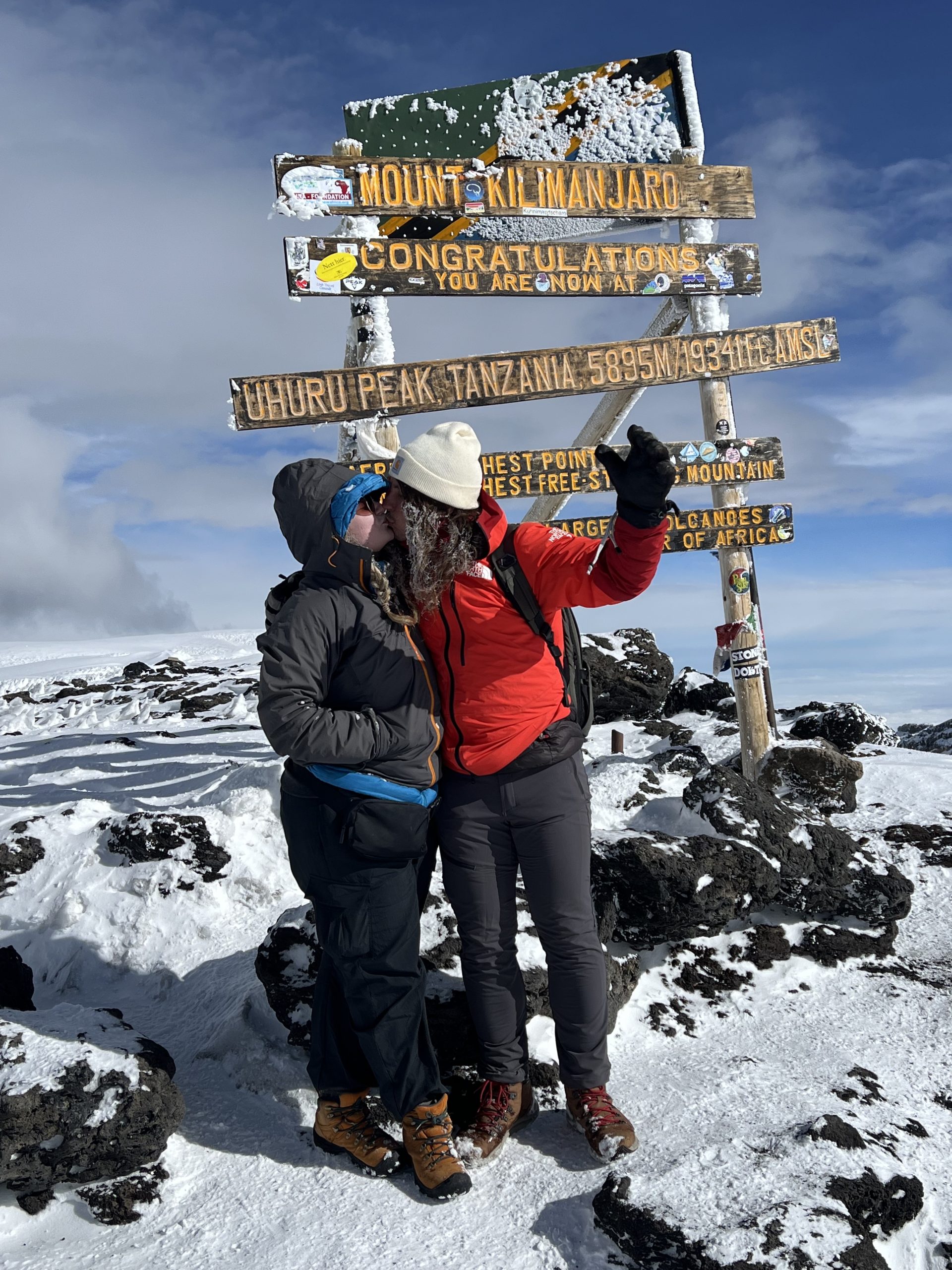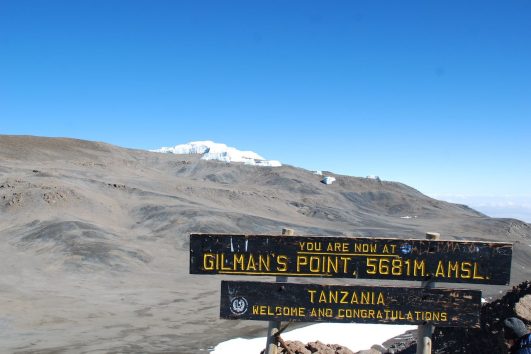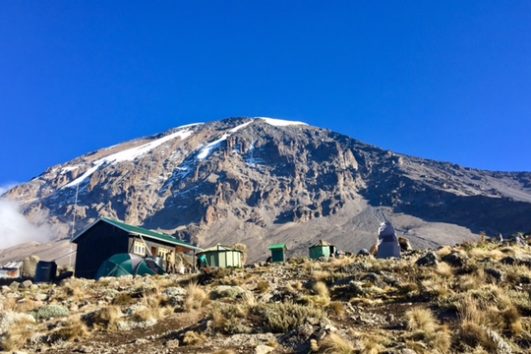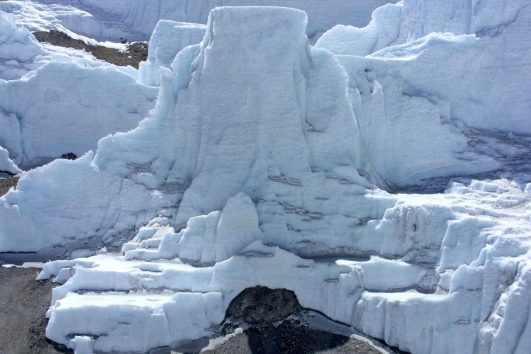Uhuru Peak, Mount Kilimanjaro’s Highest Point: Conquering the Roof of Africa
Elevation: 5,895 meters (19,341 feet) above sea level
Reaching Uhuru Peak, the highest point on Mount Kilimanjaro, is more than just an achievement; it’s a life-changing experience, a symbol of resilience, and for many, the pinnacle of their outdoor adventures. As Africa’s tallest mountain, Kilimanjaro looms at an impressive 5,895 meters (19,341 feet), and standing atop Uhuru Peak, gazing across the plains of Tanzania, is the ultimate reward for those who make the trek.
In this article, we’ll explore everything you need to know about Uhuru Peak, from the breathtaking ascent to its deep cultural significance, ensuring you’re fully prepared to appreciate this majestic destination.
Where is Uhuru Peak?
Uhuru Peak is the highest point on Mount Kilimanjaro, a dormant volcano and the tallest free-standing mountain in the world. Situated at the summit of Kibo, Kilimanjaro’s highest volcanic cone, Uhuru Peak crowns the adventure for thousands of trekkers each year who come to experience this iconic natural wonder.
“Uhuru” means “freedom” in Swahili, and the name was given in 1961 when Tanzania gained independence from British colonial rule. Reaching this point signifies not just the freedom of Tanzania but also the personal triumph of every climber who makes the challenging journey to the top.
The Trek to Uhuru Peak: Popular Routes and Challenges<strong
Climbing to Uhuru Peak is no easy feat, but several well-known routes lead to the summit, each offering unique experiences and challenges. The most popular routes include:
Machame Route: Known as the “Whiskey Route,” this path offers scenic views and a gradual ascent, often used for its higher success rates.
Lemosho Route: Starting on the western side of Kilimanjaro, this longer route is ideal for acclimatization and provides a diverse trekking experience. Check out more about the Lemosho Route.
Marangu Route: Dubbed the “Coca-Cola Route,” it’s the only route offering hut accommodation, making it more comfortable for some trekkers.
Rongai Route: Approaching from the north, this route is quieter, with fewer crowds, and offers a different perspective of the mountain.
Northern Circuit: The longest route to Uhuru Peak, it offers ample acclimatization time and incredible panoramic views.
Despite the varying levels of difficulty, all climbers face a common challenge: the high altitude. The summit, Uhuru Peak, sits just below 6,000 meters, and altitude sickness is a real risk. It’s essential to take the trek slowly, allow time for acclimatization, and be prepared for long, strenuous days—particularly the final ascent to the summit, which often starts around midnight.
Learn more about all the Mount Kilimanjaro climbing trails, and conditions.
The Summit Day: Reaching Uhuru Peak, Mount Kilimanjaro
The final push to Uhuru Peak is undoubtedly the most grueling yet exhilarating part of the climb. Most treks begin the summit attempt in the dark, around midnight, to reach the peak in time for sunrise. This approach allows trekkers to climb under the stars and witness the breathtaking dawn as it lights up the African horizon.
The climb to the summit, especially from Stella Point (5,756 meters/18,885 feet), is physically demanding due to the steep terrain and lack of oxygen. The temperatures often plunge below freezing, and the thin air makes every step feel like a marathon. Despite these challenges, climbers push forward, motivated by the prospect of standing at Uhuru Peak, knowing they’re about to reach the highest point in Africa.
Upon reaching the summit, climbers are greeted by the iconic Uhuru Peak sign, where they proudly take photos as proof of their remarkable achievement. From here, you can take in the awe-inspiring views of the surrounding glaciers, volcanic craters, and, on a clear day, the vast African plains that stretch endlessly into the horizon.
The Significance of Uhuru Peak
For many, reaching Uhuru Peak is more than just a physical challenge; it represents a personal journey of perseverance, determination, and accomplishment. The summit is not just a geographical point but also a symbol of the freedom and unity of the Tanzanian people. “Uhuru,” meaning “freedom” in Swahili, reminds climbers of the liberation of Tanzania and the enduring spirit of its people.
The journey to Uhuru Peak also offers a deep connection to the natural world. Mount Kilimanjaro, with its rapidly disappearing glaciers and diverse ecosystems, stands as a powerful reminder of our planet’s fragility in the face of climate change. The glaciers visible near the summit, including the Northern Ice Field and Furtwangler Glacier, are shrinking every year, making a visit to Uhuru Peak a rare and precious experience for those who witness it today.
Climate and Conditions at Uhuru Peak
The conditions at Uhuru Peak are extreme. The air is thin, with oxygen levels about half of what they are at sea level, and temperatures can drop as low as -20°C (-4°F) during the night. Even though Kilimanjaro lies just south of the equator, the summit is located in the Arctic zone, where snow and ice are a permanent feature.
While daytime temperatures at lower elevations are warm and pleasant, climbers must be prepared for drastic changes as they approach the summit. Proper gear—thermal layers, gloves, a warm hat, and a down jacket—is essential to survive the bitter cold near Uhuru Peak.
Best Time to Climb to Uhuru Peak, Mt Kilimanjaro’s Highest Point
Climbers can attempt to summit Uhuru Peak year-round, but the best times to climb are during Kilimanjaro’s dry seasons, which run from January to early March and June to October. During these periods, the weather is more stable, and the paths are less muddy, making the trek to the summit more manageable. However, these are also the busiest times, so booking well in advance is recommended.
Quick Facts About Uhuru Peak
Elevation: 5,895 meters (19,341 feet) above sea level, the highest point in Africa.
Location: At the summit of Kibo, the tallest of Kilimanjaro’s three volcanic cones.
Routes to the Peak: Accessed via several routes, including Machame, Lemosho, Marangu, Rongai, and the Northern Circuit.
Weather: Freezing temperatures, particularly during the summit night, with snow and ice common year-round.
Summit Day: Typically begins at midnight, with the final push taking 6-8 hours from the last camp to Uhuru Peak.
Why You Should Climb to Uhuru Peak
For many adventurers, climbing to Uhuru Peak is a bucket-list experience. It’s not just about the bragging rights of reaching the highest point in Africa—it’s about the profound sense of accomplishment, the deep connection with nature, and the unforgettable journey to the top of a legendary mountain.
Few places on Earth can offer the unique experience of standing atop a snow-capped peak just a few hundred miles from the equator. The contrasts, the challenges, and the sheer beauty of Kilimanjaro make Uhuru Peak a truly special destination.
By making the climb, you become part of a rich history of explorers, mountaineers, and adventurers who have all sought to stand on the Roof of Africa. And with the glaciers at risk of disappearing in the near future, there has never been a more poignant time to make the journey.
Stand on the Roof of Africa; Uhuru Peak – Mount Kilimanjaro
Uhuru Peak, the pinnacle of Mount Kilimanjaro, is more than a physical summit—it’s a symbol of freedom, perseverance, and the beauty of the natural world. As the highest point in Africa, it offers climbers not just breathtaking views, but a journey of personal growth and achievement.
If you’re ready for a challenge, the trek to Uhuru Peak will leave you with memories that last a lifetime. Whether you’re drawn to the thrill of the climb, the stunning landscapes, or the historical and cultural significance of this iconic location, summiting Uhuru Peak is an adventure like no other.
For those who make the journey, Uhuru Peak represents the ultimate test of endurance, strength, and the human spirit.
FAQs about Uhuru Peak
- What is the altitude of Uhuru Peak?
Answer: Uhuru Peak stands at 5,895 meters (19,341 feet), making it the highest point in Africa.
- How difficult is it to reach Uhuru Peak?
Answer: Reaching Uhuru Peak is challenging due to the high altitude, low oxygen levels, and steep terrain. However, with proper acclimatization and preparation, climbers of average fitness can achieve this goal.
- Which is the best route to reach Uhuru Peak?
Answer: The most popular routes to Uhuru Peak include the Machame Route (scenic and popular), Lemosho Route (great for acclimatization), and Marangu Route (the only route with hut accommodations). The choice depends on your fitness, experience, and preferences.
- When is the best time to climb to Uhuru Peak?
Answer: The best time to climb Kilimanjaro and reach Uhuru Peak is during the dry seasons, from January to early March and June to October, when weather conditions are more favorable.
- How long does it take to reach Uhuru Peak?
Answer: Depending on the route chosen, it typically takes between 5 to 9 days to reach Uhuru Peak. Summit day, which is the final ascent to the peak, usually takes 6-8 hours starting around midnight.
- Is it possible to reach Uhuru Peak without mountaineering experience?
Answer: Yes, Uhuru Peak can be reached without technical climbing experience. Kilimanjaro is a non-technical trek, but climbers must be prepared for the altitude and physical exertion.
- Can altitude sickness affect my ascent to Uhuru Peak?
Answer: Yes, altitude sickness is a common concern on the trek to Uhuru Peak. It’s essential to ascend slowly, stay hydrated, and give your body time to acclimatize to the high altitude.
- What should I wear when climbing to Uhuru Peak?
Answer: You will need thermal clothing, a down jacket, waterproof layers, gloves, and a warm hat. The temperatures can drop to -20°C (-4°F) or lower near the summit, so it’s crucial to be well-prepared.
- Is Uhuru Peak affected by climate change?
Answer: Yes, Uhuru Peak and the glaciers around it are significantly affected by climate change. The Northern Ice Field and other glaciers near the summit are shrinking rapidly and may disappear within a few decades.
- What can I expect to see at Uhuru Peak?
Answer: At Uhuru Peak, you will witness breathtaking views of the surrounding glaciers, volcanic craters, and the vast African plains below. On a clear day, the sunrise from Uhuru Peak is a magical sight.
- How long can I stay at Uhuru Peak once I reach the summit?
Answer: Due to the extreme altitude and cold, most climbers spend only a short time (10-20 minutes) at the summit to take photos and enjoy the view before starting the descent.
- What is the significance of the Uhuru Peak sign?
Answer: The famous sign at Uhuru Peak marks the highest point on Mount Kilimanjaro and in Africa. It’s a popular spot for climbers to take photos as a testament to their achievement.
These FAQs cover the key aspects of reaching and experiencing Uhuru Peak, ensuring that climbers are well-prepared for the challenge and the rewards of summiting Africa’s highest point.





Tour Reviews
There are no reviews yet.
Leave a Review